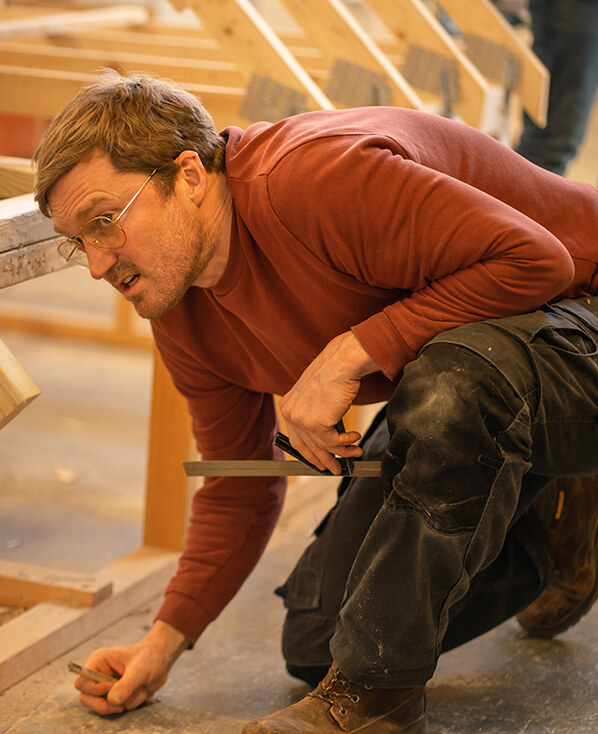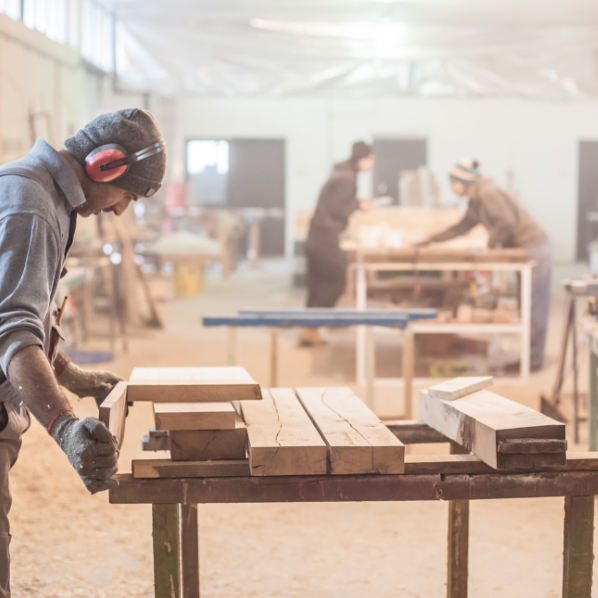Call us today for free or enquire for more course information - 0800 345 7492
Our Carpentry and Joinery Courses
Become a carpenter with our 3-stage programme!
Why choose Access Training?
- Small class sizes, so each individual gets plenty of attention from our carpentry tutors
- Our flexible carpentry and joinery courses can accommodate your existing commitments
- Flexible payment options (including monthly payment plans)
- A blend of online learning and hands-on training at the Access Training centre
- 3 year career support: we'll help you to pick the right carpentry career options
Carpentry & Joinery Courses: Reviews From Our Students
Established in
2003Courses delivered
35,000Students trained
100,000How Can We Help You?
Why become a carpenter?
Carpenters are in short supply right now, with nearly two thirds (64%) of construction SMEs struggling to hire carpenters. Carpentry is now the trade in shortest supply for the first time in a while, and naturally these shortages are allowing qualified carpenters to demand higher wages.Recently, the Construction Industry Training Board (CITB) estimated that 230,000 new skilled workers would be needed to meet demand for new infrastructure and housing projects in the UK. More recently still, the FMB’s latest State of the Trade Survey found that 40% of construction trades are experiencing their highest shortage of skills since the gap began in 2013.
- Rewarding, varied work
- Opportunities to earn a great wage
- Enjoyment and satisfaction
- Build a future that you can be proud of
- Fast track to a new career path
With demand currently sky-high, now is the perfect time to pursue a carpentry career.
Carpenter Career Path: How Much Could I Earn?
[Source: Adzuna]
Job Description
– what's it like being a carpenter?
Carpenters can specialise in all sorts of different jobs, such as installing doors, floors and furniture in new builds; renovating or refitting existing structures; fitting kitchens; building sets for film and theatre companies, and much more. The words ‘carpenter’ and ‘joiner’ are often used interchangeably, but there is a difference: a joiner typically works in a workshop and creates items using machinery, whereas carpenters are more dynamic, moving from one project to the next in houses or businesses, assembling kitchens, fitting stairways, hanging doors or building stud walls and so on.
Common carpentry jobs include:
- Measuring, marking up, cutting, shaping, fitting and finishing timber
- Installing floor joists, floorboards, roof trusses and wall partitions
- Fitting interiors such as staircases, doors, skirting boards, cupboards and kitchens
- Drawing and working with technical drawings
- Gaining knowledge of different types of wood and their uses
- Working in residential or commercial buildings
- Restoring historical buildings


Changing career is never easy and once you are older this becomes even harder. With the amazing help, advice and support from Access Training, changing careers is made much easier so thank you for all your work. They work well together and give a great blend of experience and different ways of thinking. Jon N - Student






